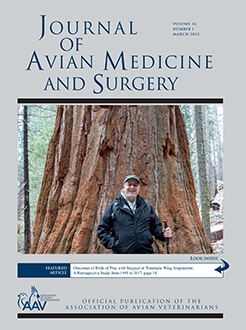The objective of this study was to construct a calibration phantom for bone mineral density (BMD) measurements adapted to avian anatomy by quantitative computed tomography. The determination of BMD is important to assess avian osteoporosis in poultry at production facilities and to study biological features in association with flight patterns in birds. Quantitative computed tomography measured in Hounsfield units is a well-established technique for BMD measurements. Translation of Hounsfield units into the International System of Units (mg/cm3) requires the use of a calibration phantom. Although calibration phantoms for routine use in humans are commercially available, phantoms suited to avian anatomy are not. A liquid dipotassium hydrogen phosphate calibration standard was constructed out of commercially available materials, easily allowing for variations in size, bone diameter, and adaptation to avian skeletal anatomy. Periodically, quantitative computed tomography scans were performed to monitor constant correlation to the calibration standard over 3 months and to monitor for the potential influence of gas bubbling and water evaporation in the rods on BMD measurements. Finally, the calibration phantom was tested for BMD measurements with carcasses from 2 bird species, including 3 peregrine falcons (Falco peregrinus; 2 juvenile males, 1 adult female with inactive reproductive status) and 4 Eurasian kestrels (Falco tinnunculus; 1 juvenile and 2 adult males, 1 adult female with inactive reproductive status). Results demonstrated stability of the calibration phantom without the need to refill or replace rods, plus a stable correlation line (R2 = .99) over the 3-month evaluation period. It was possible to place the phantom directly on the bird carcasses, close to the measured bones, to improve BMD analysis. As evaluated, the phantom appeared to be adaptive to avian skeletal anatomy. Moreover, it was possible to build the phantom within 24 hours from commercially available materials.
How to translate text using browser tools
2 May 2022
A Novel Dipotassium Hydrogen Phosphate Phantom for Calibrating Computed Tomographic Bone Density Measurements in Birds
Julia M. Poleschinski,
Nele Eley,
Dirk Enderlein,
Martin Kramer,
Michael Lierz,
Dominik Fischer
ACCESS THE FULL ARTICLE
Avian
BONE MINERAL DENSITY
dipotassium hydrogen phosphate
K2HPO4
phantom
quantitative computed tomography
raptor





